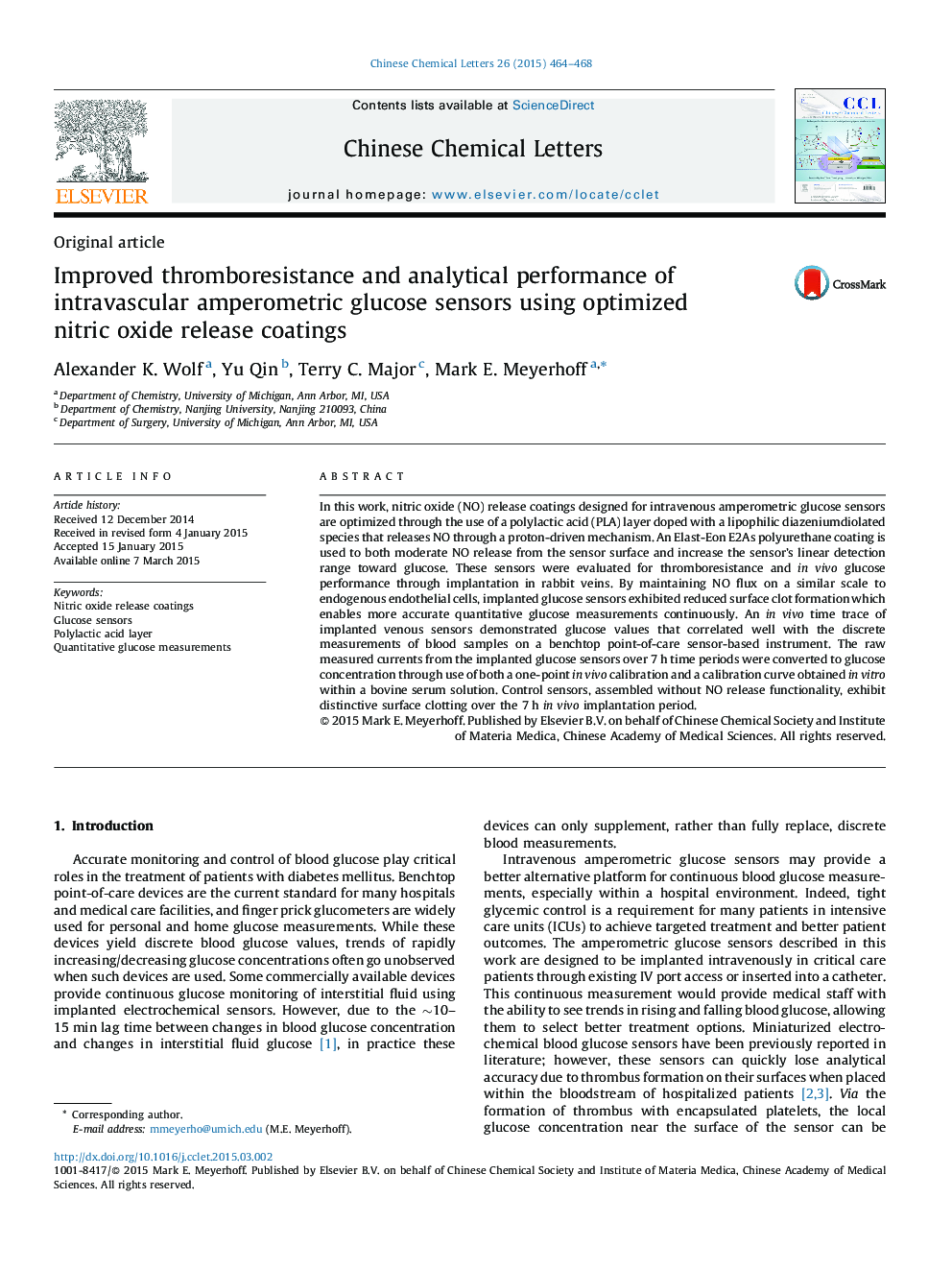| Article ID | Journal | Published Year | Pages | File Type |
|---|---|---|---|---|
| 1254064 | Chinese Chemical Letters | 2015 | 5 Pages |
In this work, nitric oxide (NO) release coatings designed for intravenous amperometric glucose sensors are optimized through the use of a polylactic acid (PLA) layer doped with a lipophilic diazeniumdiolated species that releases NO through a proton-driven mechanism. An Elast-Eon E2As polyurethane coating is used to both moderate NO release from the sensor surface and increase the sensor's linear detection range toward glucose. These sensors were evaluated for thromboresistance and in vivo glucose performance through implantation in rabbit veins. By maintaining NO flux on a similar scale to endogenous endothelial cells, implanted glucose sensors exhibited reduced surface clot formation which enables more accurate quantitative glucose measurements continuously. An in vivo time trace of implanted venous sensors demonstrated glucose values that correlated well with the discrete measurements of blood samples on a benchtop point-of-care sensor-based instrument. The raw measured currents from the implanted glucose sensors over 7 h time periods were converted to glucose concentration through use of both a one-point in vivo calibration and a calibration curve obtained in vitro within a bovine serum solution. Control sensors, assembled without NO release functionality, exhibit distinctive surface clotting over the 7 h in vivo implantation period.
Graphical abstractIn this work, intravenous amperometric glucose sensors demonstrate improved in vivo performance by utilizing nitric oxide (NO) release coatings and an Elast-Eon E2As polyurethane top coat. An in vivo time trace obtained with sensors implanted within rabbit jugular veins demonstrated glucose values that correlated well with the discrete measurements of blood samples on a benchtop point-of-care sensor-based instrument.Figure optionsDownload full-size imageDownload as PowerPoint slide
